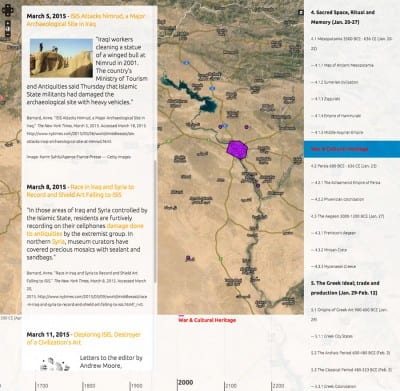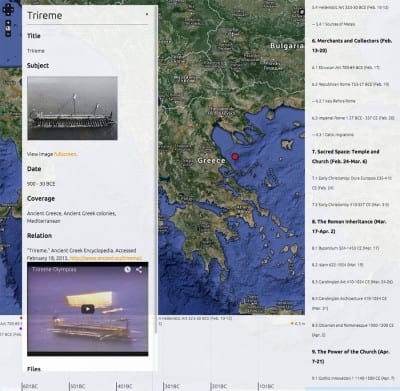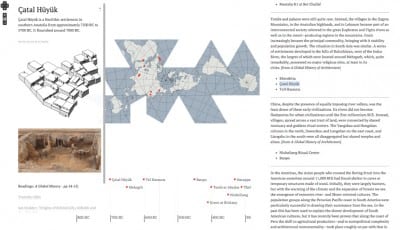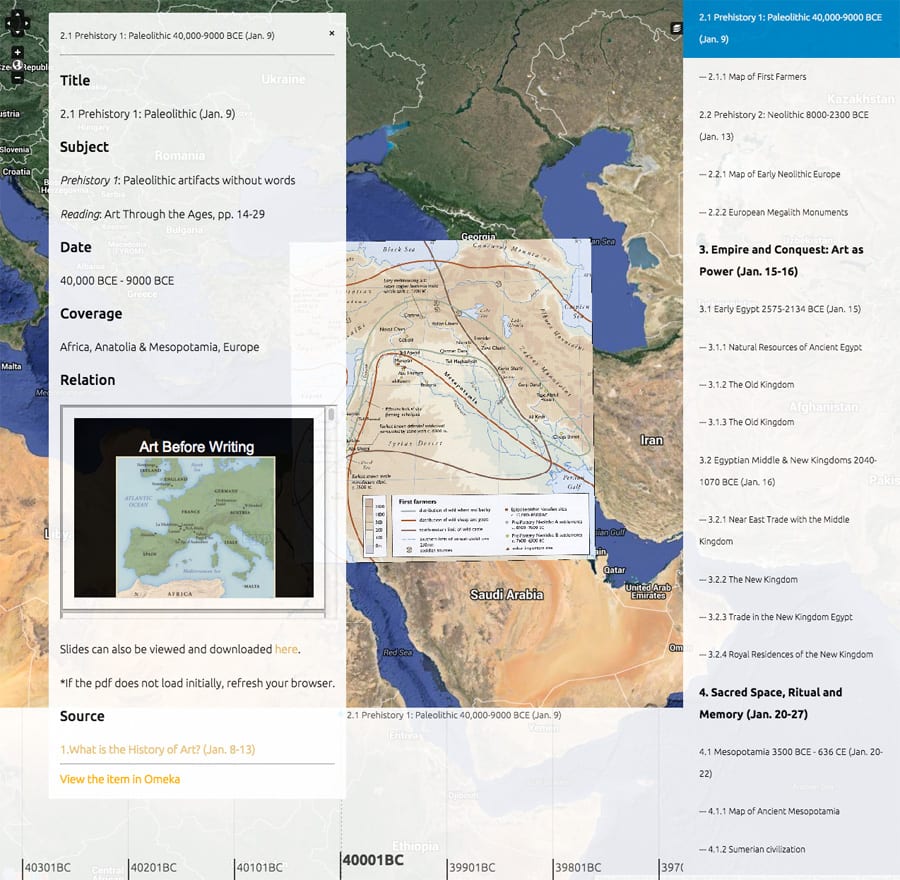
As the art history classroom moves beyond the (digitized) slide library, how has the incorporation of tools emerging from under the umbrella of “digital art history” impacted the discipline in the twenty-first century? As a result of the shift away from the traditional slide and lecture format, are students better critical thinkers, researchers, and writers? Are they developing the skills and competencies of scholars capable of contributing original thinking, and framing the questions that can advance the discipline in the twenty-first century? How well are new technologies supporting the training of future art historians?
These are some of the questions that will be explored by members of Art Historians Interested in Pedagogy and Technology (AHPT) at the February 2016 College Art Association conference in Washington, DC. Here is a quick look at our presentation lineup:

“Neatline: Syllabus as Interactive Visualization” is a demonstration by Duke University professor Caroline Bruzelius and multimedia analyst Hannah Jacobs, in which they examine how student engagement with course material can change when a syllabus is taken from a static page and placed in an interactive visualization. Bruzelius and Jacobs used Neatline, a visualization plugin for the Omeka content management system, for their Spring 2015 experiment that combined temporal, spatial, textual, and other visual media forms to transform what might have otherwise be viewed as a perfunctory list of course topics into an interactive visualization. Their findings? Neatline enables users to create interactive, non-linear visual narratives that highlight spatial and temporal relationships across art historical narratives.

In “Challenging the Canon: Using a Digital Platform for a Survey of World Architectures,” another experiment with Neatline (this time applied to architecture), University of Colorado Denver PhD candidate Solmaz Mohammadzadeh Kive discusses her ongoing digital pedagogy project for teaching her course Histories of World Architectures. In this pilot aimed at harvesting two main potentials of digital media for teaching world architecture—resisting the Eurocentric grand narrative of “architecture” and developing students’ critical thinking skills—students navigate course material through various paths, and explore different historical, geographical, and thematic layers. While Kive is responsible for supplying materials, her efforts shift from delivering information to helping students navigate through the material, analyze it, and develop critical thinking skills (while at the same time understanding the reductive process involved in any history making).

R. Dean Turner from the Art Institute of Austin explores how we can involve students in the learning process while simultaneously generating an interest in a subject often seen only as “a humanities requirement.” In “The Implications of Augmented Reality in the Art History Curriculum: The Future of the Next Generation of Art Historians,” Turner explores augmented reality and its implications to the art history curriculum, its development, and the role of the educator within the process.
Join us at CAA 2016 as AHPT considers the impact of new technologies on the training of the next generation of art historians.
– Nathalie Hager, with Sarah Jarmer Scott, on behalf of Art Historians Interested in Pedagogy and Technology
For more information on “A Signature Pedagogy for Art History in the Twenty-First Century” at CAA 2016 please visit www.ahpt.us or contact session co-chairs Sarah Jarmer Scott, Associate Professor of Art History at Wagner College or Nathalie Hager, PhD Candidate, The University of British Columbia’s Okanagan campus.

